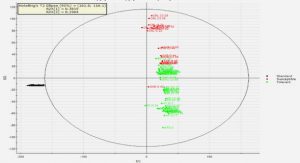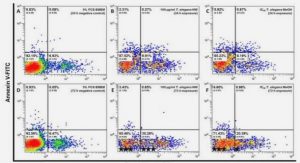Get Complete Project Material File(s) Now! »
Current Han•cst Afethods
In selecting the most appropriate small-tree harvesting system, the logger must consider many facets of his expected operations. For instance, stand location, both in geographic terms and in connection with primary delivery yards, can influence equipment decisions in relation to hauling method. Between-stand move considerations are afTected by the proposed harvest schedules of stands. Tract and stand characteristics (e.g. terrain, brush conditions, existing roads, tree spacing, volume per acre before and after treatment, and individual tree characteristics) may dictate machine specifications. Other factors, such as local market needs, product fonns necessary to satisfy the markets, level of acceptable resiJual stand damage, or aesthetic and environmental concerns can also place limits on equipment types applicable to the operations (Strickland, 1980).
There are several factors which are particularly germane to southern equipment selection options. Timberland tracts, most of which are small and privately owned, are widely dispersed throughout the South. The present road systems and bridge laws restrict equipment dimensions and size of hauled loads enough to disqualify certain machinery from consideration. Also, many operators might find equipment purchasing funds difficult to obtain, which can preclude the use of capital intensive small-tree systems on a broad scale.
Extent of Damage and Its Effects
As small tree operations become more mechanized, the likelihood of tree damage tends to increase drastically. Heavy equipment may cause severance or exposure of roots, which will reduce tree vigor (Nilsson, 1978). Root damage by forest machinery has been found to impair pine and spruce growth by up to 12 percent (Bredberg and Wasterlund, 1983). Trees also can be scarred by collisions with machines, tires, or skidded loads. Susceptibility to disease or insect attack because of harvesting injuries to the trees may or may not be a problem, but the damage can adversely affect the value of the product eventually harvested from the residual stand (Nilsson, 1978).
In a thinning study conducted in northern hardwood stands, Biltonen et al. ( 1976) found that injuries to stems during the operations were the most prominent form of tree damage. I Iarvesting method exerted a strong influence on the occurrence of injuries. Mechanical row thinning caused an average of 63 incidences of bole damage per acre (18 percent of the remaining trees per acre), while chainsaw felling averaged only 6 ( 4 percent). Mechanical selection and row with selection methods injured 26 and 14 percent of the residual stand, respectively. Manual operations did not damage the ro0ts to any extent, but mechanized selection and row with selection thinnings both injured the roots of 14 trees per acre on the average. Root damage was most common with row thinning, averaging 39 trees per acre (Biltonen et al., 1976), but root damage by all three mechanical 7 With prelogging, unlike thinning, damage to the remaining trees is not a major concern since the timber left standing will be harvested within a relatively short period of time.
Literature Review methods was near 10 percent of the residual stand. Table 3 more fully details the results of this study. Differences between the deliquescent crown form of northern hardwoods and the excurrent form of southern pine and variations in branching habits may make interpretation of the absolute numbers and locations of damage from this study inapplicable to the southern pine forests. 1 lowever, the trends which are apparent concerning the effect of harvest method on the incidence of tree damage may be pertinent to southern pine thinning operations.
!deans of Reducing t/ze Impact of Small Trees on Jlan·esting Operations
One branch of thinning/prclogging equipment development concentrated on combining several handling and harvesting functions into a main base machine (Dunwoody, 1982). Equipment designed to employ this ideology might include the TH-100, the TII-210, or the Propst harvester.
The problem with this approach, however, is that, when designed to meet some particular application, these integrated machines are often not sufficiently versatile to profitably operate in other situations. In addition, the multiplying efTect of mechanical availability on components resulted in very low utilization. Development contemporary with that discussed above focused attention on the design of specialized attachments which can be used on a variety of carriers already in production in order to best match equipment to the harvesting conditions encountered. In this way, carrier manufacturing costs can be extended over a greater number of machines and equipment flexibility can be obtained through interchange of attachments (Dunwoody, 1982).
Numerous other approaches have been proposed to reduce the effects of small-diameter harvested material. Decreasing time for machine work elements can allow the harvest of more trees per hour. This change in cycle time is bound by cost and mechanical availability constraints (Stuart, 1982). Designing equipment to more closely match the material handled (i.e. small, light weight) also has been suggested (Kantola, 1973; Stuart, 1982). Lanford and Stokes ( 1985) noted that appropriate operator training and harvest planning are essential if smallwood operations are to be successful.
Introduction
Literature Re,·iew
The Small Tree Resource
Commercially Available Timber
1ne Impact of Small Trees
Operation Objectives
Production Factors
System Characteristics
Current Harvest Methods
Means of Reducing the Impact of Small Trees on Harvesting Operation
Damage to the Residual Site and Stand
Extent of Damage and Its Effects
Factors Affecting the Incidence of Damage
Methods of Controlling Damage
]\lethods and Procedures
Results and Discussion
Industry Survey
System Studies
System A
System B
System C
System D
System E
Economic Analysis
Residual Stand Damage Analysis
Recommendations
Summary and Conclusions
References
GET THE COMPLETE PROJECT
A Documentation and Analysis of the Physical, Operating, and Business Em:ironmcnts for Small-Tree Handling and Harvesting Systems






